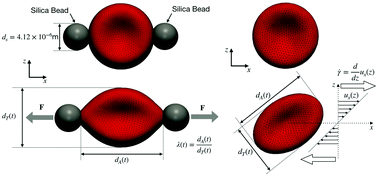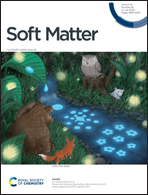On the effects of membrane viscosity on transient red blood cell dynamics†
Abstract
Computational Fluid Dynamics (CFD) is currently used to design and improve the hydraulic properties of biomedical devices, wherein the large scale blood circulation needs to be simulated by accounting for the mechanical response of red blood cells (RBCs) at the mesoscale. In many practical instances, biomedical devices work on time-scales comparable to the intrinsic relaxation time of RBCs: thus, a systematic understanding of the time-dependent response of erythrocyte membranes is crucial for the effective design of such devices. So far, this information has been deduced from experimental data, which do not necessarily adapt to the broad variety of fluid dynamic conditions that can be encountered in practice. This work explores the novel possibility of studying the time-dependent response of an erythrocyte membrane to external mechanical loads via mesoscale numerical simulations, with a primary focus on the detailed characterisation of the RBC relaxation time tc following the arrest of the external mechanical load. The adopted mesoscale model exploits a hybrid Immersed Boundary-Lattice Boltzmann Method (IB-LBM), coupled with the Standard Linear Solid (SLS) model to account for the RBC membrane viscosity. We underscore the key importance of the 2D membrane viscosity μm to correctly reproduce the relaxation time of the RBC membrane. A detailed assessment of the dependencies on the typology and strength of the applied mechanical loads is also provided. Overall, our findings open interesting future perspectives for the study of the non-linear response of RBCs immersed in time-dependent strain fields.



 Please wait while we load your content...
Please wait while we load your content...